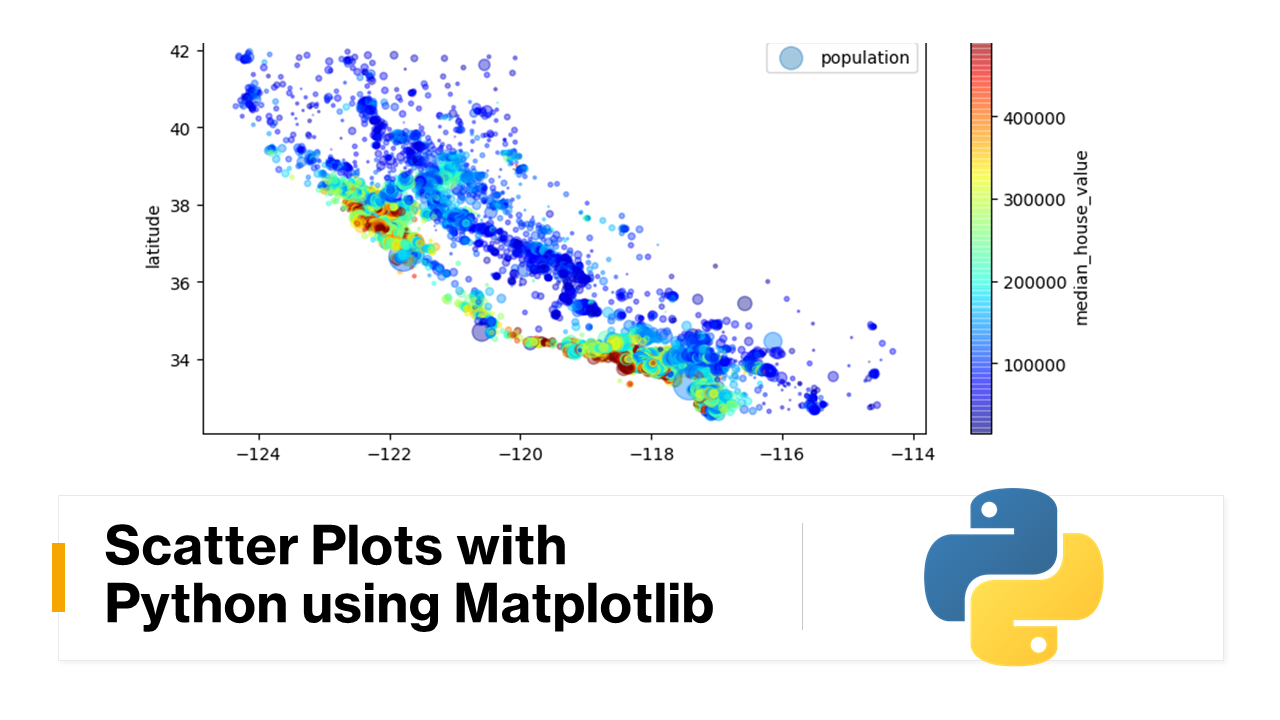
- Label point on scatter plot matplotlib install#
- Label point on scatter plot matplotlib full#
- Label point on scatter plot matplotlib code#
Depending on the points, you may have to play with the xytext values to get better placements.

It probably would have been less confusing if we'd used a fixed data table or a random seed. To label the scatter plot points in Matplotlib, we can use the () function, which adds a string at the specified position.
Label point on scatter plot matplotlib install#
pyplot as plt import seaborn as sns create scatterplot with increased marker size sns. The scatter () method in the matplotlib library is used to draw a scatter plot. Anaconda Install Matplotlib Create some scatter points and labels In this example, we will create 6 points and labels, they are: coord (1, 2), (2, 2), (3, 1), (2, 4), (4, 1), (5, 5) labels A, B, C, D, E, F Show scatter points with labels We will create a python function to do it. Originally it used the same: fig, ax = plt.subplots()Īs the other posts to expose the axes, however this is unnecessary and makes the: import matplotlib.pyplot as plt To increase the size of the points in the legend, you can use the markerscale argument within the matplotlib legend() function: import matplotlib. apply(), and includes the nicer-looking annotations (I thought the color scale was a bit overkill and couldn't get the colorbar to go away): ax = df.plot('x', 'y', kind='scatter', s=50 ) y and add a horizontal line that represents the average y-value: import matplotlib.pyplot as plt import numpy as np create scatter plot plt.scatter(df.x, df.y) add horizontal line at mean value of y plt.axhline(ynp.nanmean(df. import matplotlib.pyplot as plt allPoints 1,3,9, 2,4,8, 3,5,4 f, diagram plt.subplots (1) for i in range (3): pointRefNumber allPoints i 0 xPoint allPoints i 1 yPoint allPoints i 2 diagram.
Label point on scatter plot matplotlib code#
Notes The plot function will be faster for scatterplots where markers dont vary in size or color. We can use the following code to create a scatter plot of x vs. Based on this SO answer I tried to use annotate to label each point.
Label point on scatter plot matplotlib full#
Here was an alternative that avoids the loop using. To plot scatter plots when markers are identical in size and color. Scatter plots with custom symbols Matplotlib 3.7.1 documentation Note Click here to download the full example code Scatter plots with custom symbols Using TeX symbols An easy way to customize scatter symbols is passing a TeX symbol name enclosed in -signs as a marker. Any or all of x, y, s, and c may be masked arrays, in which case all masks will be combined and only unmasked points will be plotted. Notes The plot function will be faster for scatterplots where markers don't vary in size or color.

The only thing that bothered me is that I don't like pulling data out of DataFrames to then loop over them. Another commonly used plot type is the simple scatter plot, a close cousin of the line plot. To plot scatter plots when markers are identical in size and color.

I found the previous answers quite helpful, especially LondonRob's example that improved the layout a bit. The mapping between the colour values and their associated values is then displayed by adding a colour bar using the color bar function. The c option specifies the list of colours to be used for each point. Xytext=(10,-5), textcoords='offset points',įamily='sans-serif', fontsize=18, color='darkslategrey') The scatter function is then used to construct a scatter plot with various colours using the x, y, and c parameters. Or, since that looks incredibly ugly, you can beautify things a bit pretty easily: from matplotlib import cmĭf.plot('x', 'y', kind='scatter', ax=ax, s=120, linewidth=0, the participant names as text labels for each point for xpos, ypos, label in zip(x, y, labels): ax.annotate(label. Require(, function(Plotly) if (document.Here's a (very) slightly slicker version of Dan Allan's answer: import matplotlib.pyplot as pltĭf = pd.DataFrame(,įinally, if you're in interactive mode you might need to refresh the plot: () We will use the () method to describe and label the elements of the graph and distinguishing different plots from the same graph.


 0 kommentar(er)
0 kommentar(er)
